
If history is written by the victors, then Bristol is yet to declare a winner. In fact, it’s precisely this one-sided view of history that is on trial throughout Europe and the US. The port city in Southwest England was built on the transatlantic slave trade, and sustained by the beneficence of Edward Colston of the London-based Royal Africa Company (RAC). Born in Bristol in 1636, Colston joined the RAC in 1680 and assumed the post of Deputy Governor in 1689. The city remembers the funding he provided for schools, hospitals, and almshouses made possible by the wealth accumulated from transporting approximately 84,000 enslaved persons, each branded with the RAC acronym. The marks on these bodies and the subsequent history of racist exploitation is invisible, cloaked in the geography, mythology, and culture of Bristol, in the form of streets, businesses, and buildings bearing the Colston name. In recent weeks, however, the Colston’s Girls’ School has promised to re-evaluate its name this fall, while the city’s music venue, Colston Hall, reaffirmed that it was following through with its commitment to rebrand as part of its ongoing renovations.
The hidden truths of the racist enterprise were also present in a bronze statue of Colston near Bristol’s harbor. Created by the sculptor John Cassidy and erected in 1895, the statue antedates Colston’s 1721 death by 174 years. It has been the subject of controversy since his business in the slave trade became more widely known in the 1990s. Bristol City Council Member Cleo Lake, who attended Colston’s Girls’ School, has spearheaded campaigns against the city’s canonization of the slave trader both from her position in government and as an activist in the Countering Colston organization. But after years of protesting the statue, it remained in place until June 7 of this year, when Black Lives Matter (BLM) protestors yanked it down, covered it in graffiti, knelt on its neck, and threw it into the harbor. A monument seemingly so difficult to remove fell easily because, to Lake’s surprise, the statue was hollow. “It’s just like the system he represents,” Lake told me. “It’s a fake exterior that doesn’t serve anyone apart from the very few.” As it tumbled down, the statue became a metaphor for the illusion of history’s apparent intractability, now undone and revealed as nothing more than one-sided accounts repeated until they transform into indisputable facts as solid as bronze. The statue’s bronze exterior is fake, for Lake, because it gives the impression of solidity and historical truth, when in fact the statue is mostly hot air, serving only as a reminder of who has historically held power.
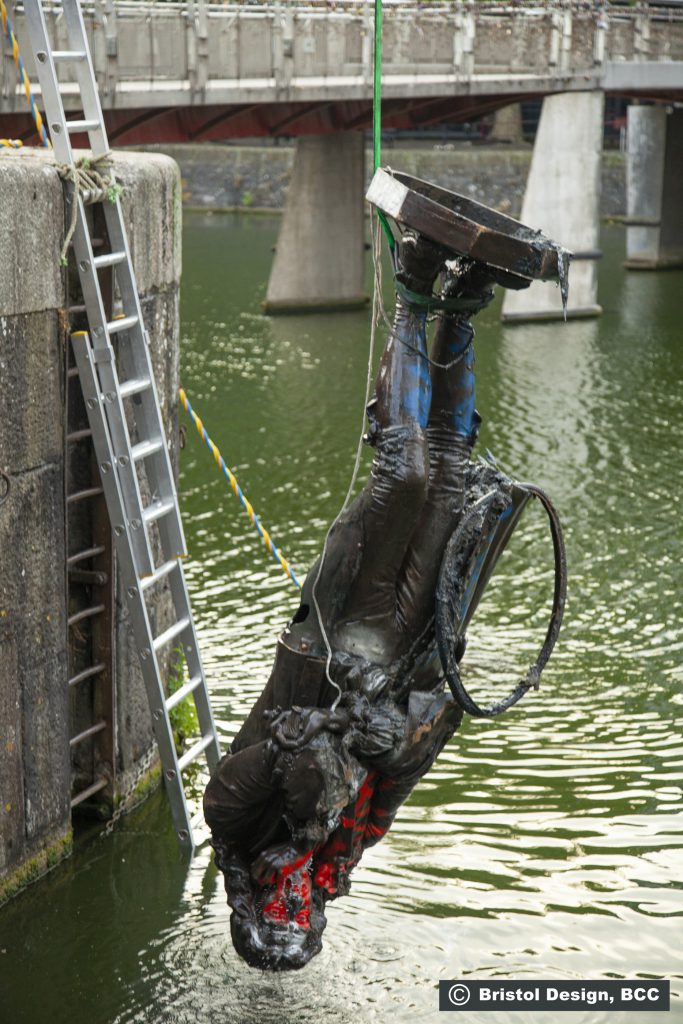
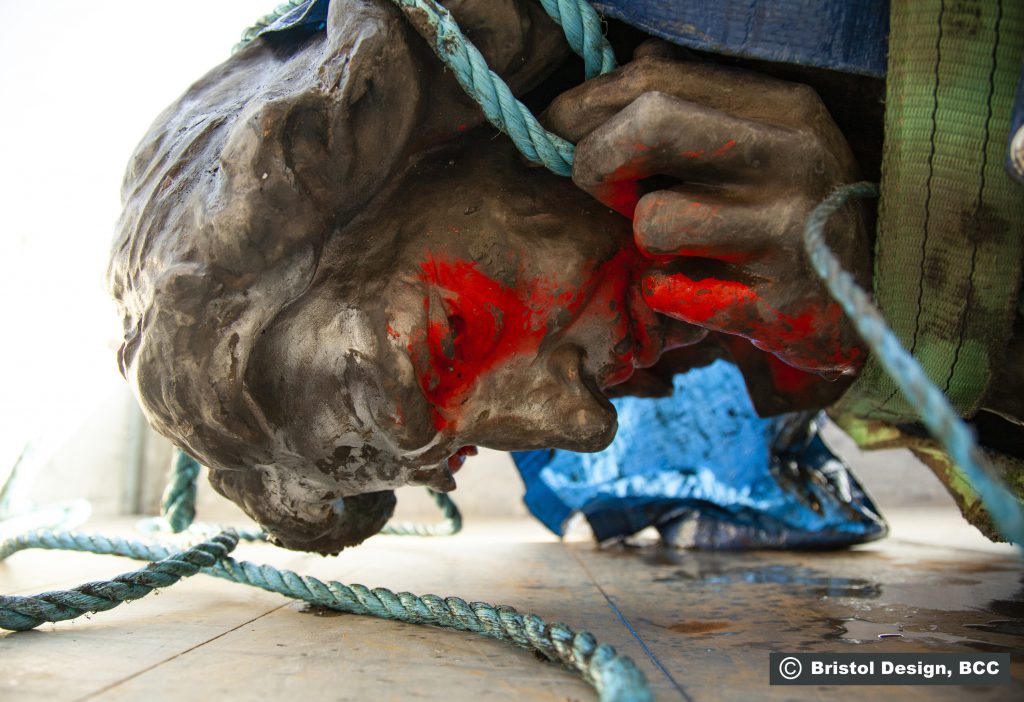
This is part of the inherent violence of monuments to empire—despite their size and prominence in cityscapes, they tend to become invisible and therefore taken for granted, particularly by those whose position in society they legitimate. Their presence seems natural and unquestionable, just like the histories they commemorate. In the aftermath of Colston’s toppling, however, the backdrop of these silent guardians of history was seemingly all the UK could see. On June 9, Sadiq Khan, the Mayor of London, announced the formulation of the Committee for Diversity in the Public Realm, which will review the city’s existing monuments and will “focus on increasing representation among Black, Asian and Minority Ethnic communities, women, the LGBTQ+ community and disability groups.” Among the many other statues under scrutiny include those depicting Cecil Rhodes at the University of Oxford and Robert Baden-Powell in Poole.
Khan’s proposal to elevate those communities excluded from the dominant historical narrative is undoubtedly a very potent method for combatting the legacy of colonialism. Representation can be powerful, but as the critic Jillian Steinhauer notes, it’s important that such gestures do not distract from the lack of accountability within institutions themselves. She cites my hometown of Charlotte, North Carolina, for its commissioning of a Black Lives Matter mural Uptown while allocating over 40% of the city’s budget to police (although they are barred from purchasing chemical agents used for crowd control in the upcoming fiscal year). Museums are just as guilty. Dr. Kelli Morgan, a curator at the Indianapolis Museum of Art, writes that with the museum’s Eurocentric orientation and cultivation of white male subjecthood, it is little wonder that despite measures for promoting access to and representation within exhibitions and staffing positions, institutions “have not produced genuine cultures of diversity, equity, and inclusion.” For Morgan, in order for museums to more accurately reflect a range of histories, the culture of the museum itself must change by confronting its historic roots. Like a mural in a Southern city with a large police budget, there is a danger that representation within the museum may only go so far in giving voice to alternative histories outside of Eurocentric narratives.
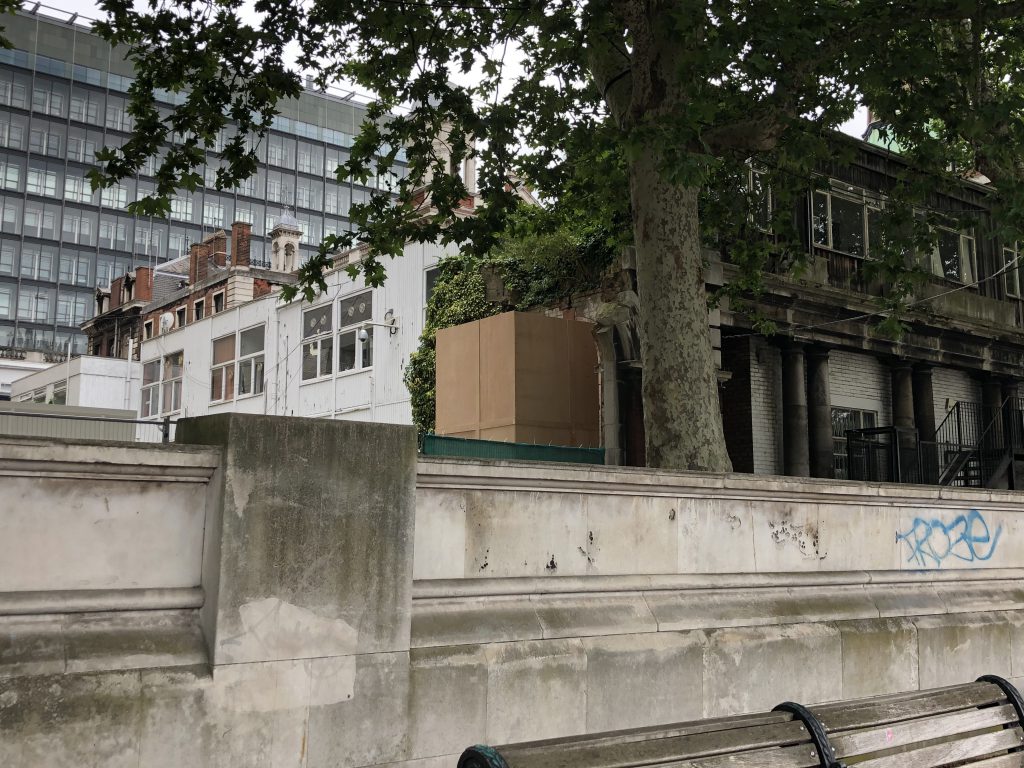
As with fallen monuments throughout Europe and the US, there is cautious discussion about what to do with the Colston statue and the pedestal. As of writing, there are a number of ePetitions on the Bristol City Council’s website with ideas, including: “Reinstate the Edward Colston Statue”; “Repair the Statute of E Colston”; “Replace the Colston Statue with Paul Stephenson”; “Replace the Edward Colston statue with a memorial to Bristol’s role in the slave trade”; “Slavery Museum in Bristol”; and “Rename Colston Hall to the George Floyd Hall.” On June 10, three days after Colston was pushed into the harbor, Bristol’s mayor Marvin Rees announced the formation of a commission to expand knowledge of the city’s history. The Mayor also confirmed that the Colston statue would be retrieved from the water and displayed in one of Bristol’s museums with consultation from communities and the Mayor’s commission. Alongside the statue will be the various placards and ephemera left over from the BLM protest that brought it down.
Councillor Lake embraces the move to transfer monuments like this to museums. “When [the statues are] on the civic landscape, it’s not about if you wish to [see them], you have to confront those monuments. Some people daily have to walk past them. Some people don’t have that choice.” In the early morning hours of July 15, however, the people of Bristol were provided with an unofficial alternative to the Colston monument, one that cast in sharp relief the complexities of marking history in public space. The artist Marc Quinn and several others clandestinely installed a resin-and-steel statue of BLM protestor Jen Reid on Colston’s vacant plinth. News of this intervention circulated rapidly along with stirring images on social media. But the optics of a white artist taking control of this now empty plinth, for so long a platform of power, and deciding how it should “speak” is deeply troubling. Artist Larry Achiampong responded to the intervention by suggesting that Quinn could have supported a Black artist in creating a piece for the plinth, stating: “Sometimes the best thing you can do when you’re part of the problem is just stop.” The City Council removed the Reid statue the following morning, with Mayor Reese explaining that “the future of the plinth and what is installed on it must be decided by the people of Bristol.”
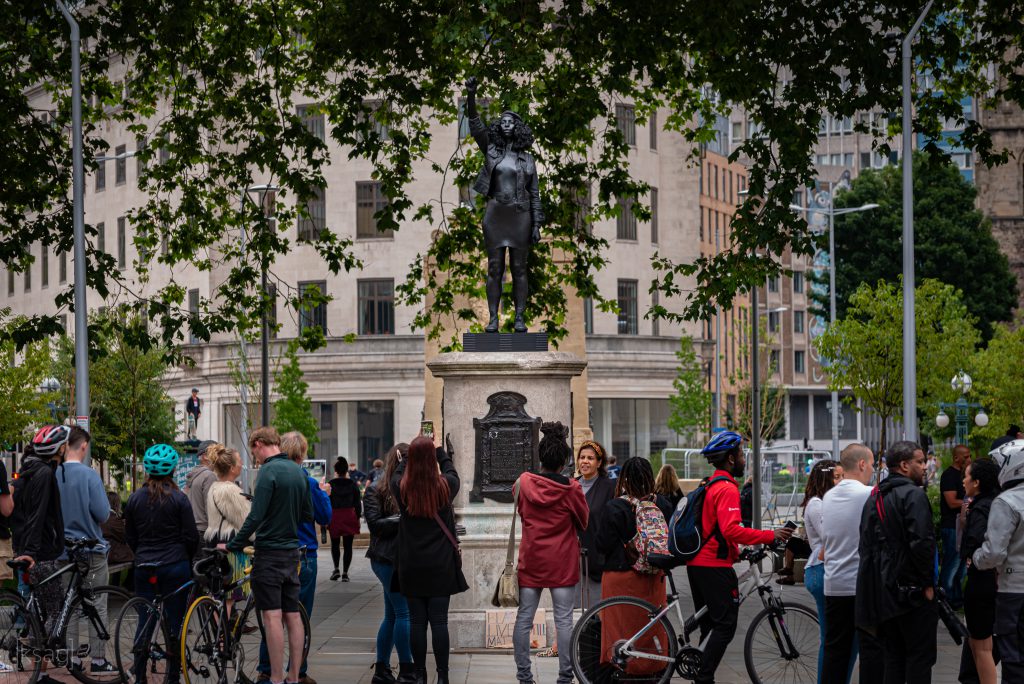
The challenge of presenting history will follow the Colston statue into the museum. Lake sees the decision to both display the statue so soon after its removal and to conserve the graffiti on its surface as a reflection of Bristol’s long history of activism and rebellion. However, she has deep reservations about the statue’s presentation in one of the City Council-run museums. Speaking of the inadequate funding suffered by Black-run cultural institutions, she echoes the words of Kelli Morgan in calling for institutional change, stating:
It isn’t good enough to have a senior director in the museum service of African heritage. It isn’t good enough to employ young people to be apprentices within [the culture sector] of diverse backgrounds. I think actually it’s the time that Black-led institutions push themselves forward, form a Trust, and tell their own story and get their own funding, rather than putting the eggs back in the mainstream basket that has never ever been in our interest, and has never ever really given us agency to tell it how it is.
Over the years, Lake has been campaigning for the creation of the Abolition Shed, a museum which tells the history of colonial rebellions. An institution like this would be the likely site for the 1702 portrait of Colston that Lake removed from her office while serving as Bristol’s Lord Mayor in 2018. Perhaps it is also an institution like this that the American-British playwright Bonnie Greer had in mind when writing on what kind of museum would be best for housing the Colston statute:
The kind that examines the complexity of the Victorian society that made [Colston] a hero; the kind that tells the story of Bristol and how it came to be; the kind that tells the story of the transatlantic slave trade from all angles; the kind that tells the story of the activists and the protestors throughout the ages; the kind that looks at the Caribbean in particular; the kind that understands how the Middle Passage forged a new people. A people I call Meta Africa.
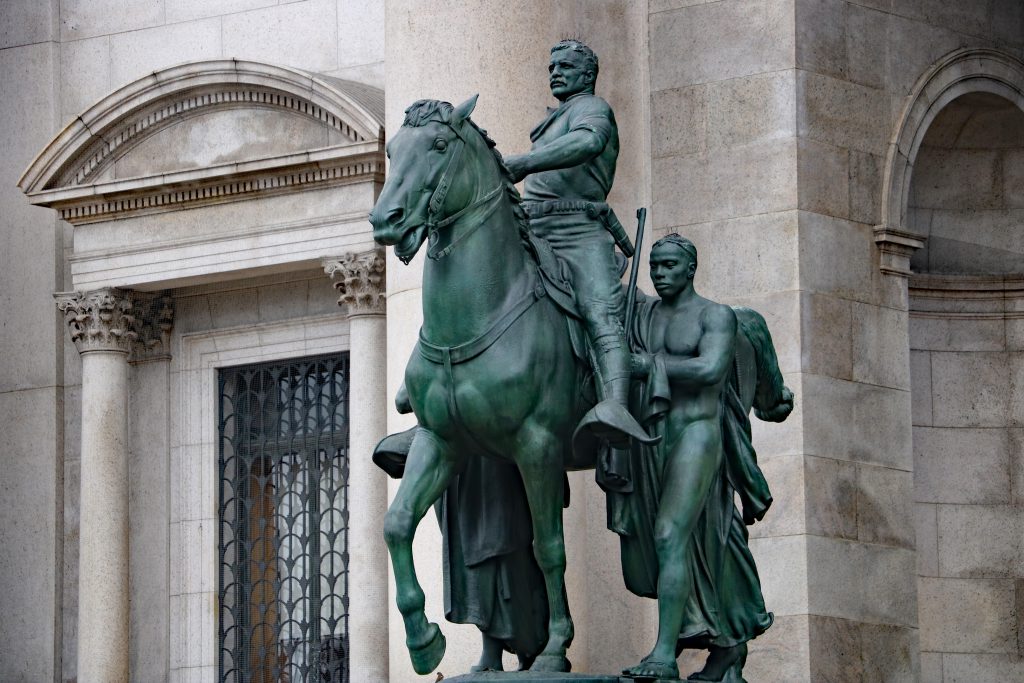
What is happening in Bristol now should capture the art world’s attention. If the answer to the question “What to do with fallen monuments?” is to put them in a museum, then it’s clear that the museum must challenge its own histories and legacies in order to properly receive them, in order to prevent a monument’s re-inscription into a singular history. By placing these statues in museums, we are asking them to enact a different kind of conservation, one that doesn’t preserve and re-present history, but instead conserves the potential for history to be challenged. This is evident in the decision to conserve the Colston statue “as is,” including the graffiti that adorns it and the bike tire that emerged hanging from Colston’s coat tails when the statue was removed from the water. Writing on the American Museum of Natural History’s recent decision to remove its contentious Theodore Roosevelt sculpture, Nicholas Mirzoeff analyzed how the museum’s legitimization of Roosevelt as an environmental “conservationist” overlapped with white supremacist beliefs and practices. What is being conserved in the Natural History Museum is a hierarchical arrangement of “races” of which white males assume a privileged position. What is needed, then, according to the artist and writer Hito Steyerl, is a definition of conservation oriented not toward the past, but toward the future—one that does not perpetuate violence.[i] The statues of empire and confederacy that dot America and Europe continue “speaking” today in spite of their silence. To make the Colston statue speak another history would be a small act of redemption
[i] See Hito Steyerl, “A Tank on a Pedestal,” in Duty Free Art: Art in the Age Planetary Civil War (Brooklyn: Verso, 2017), 1–8.
Text © Nathan Jones 2020
I was having second thoughts about this quality content solved my doubts, thank you thank you for your help.
Your website is amazing congratulations, visit mine too:
https://strelato.com
.